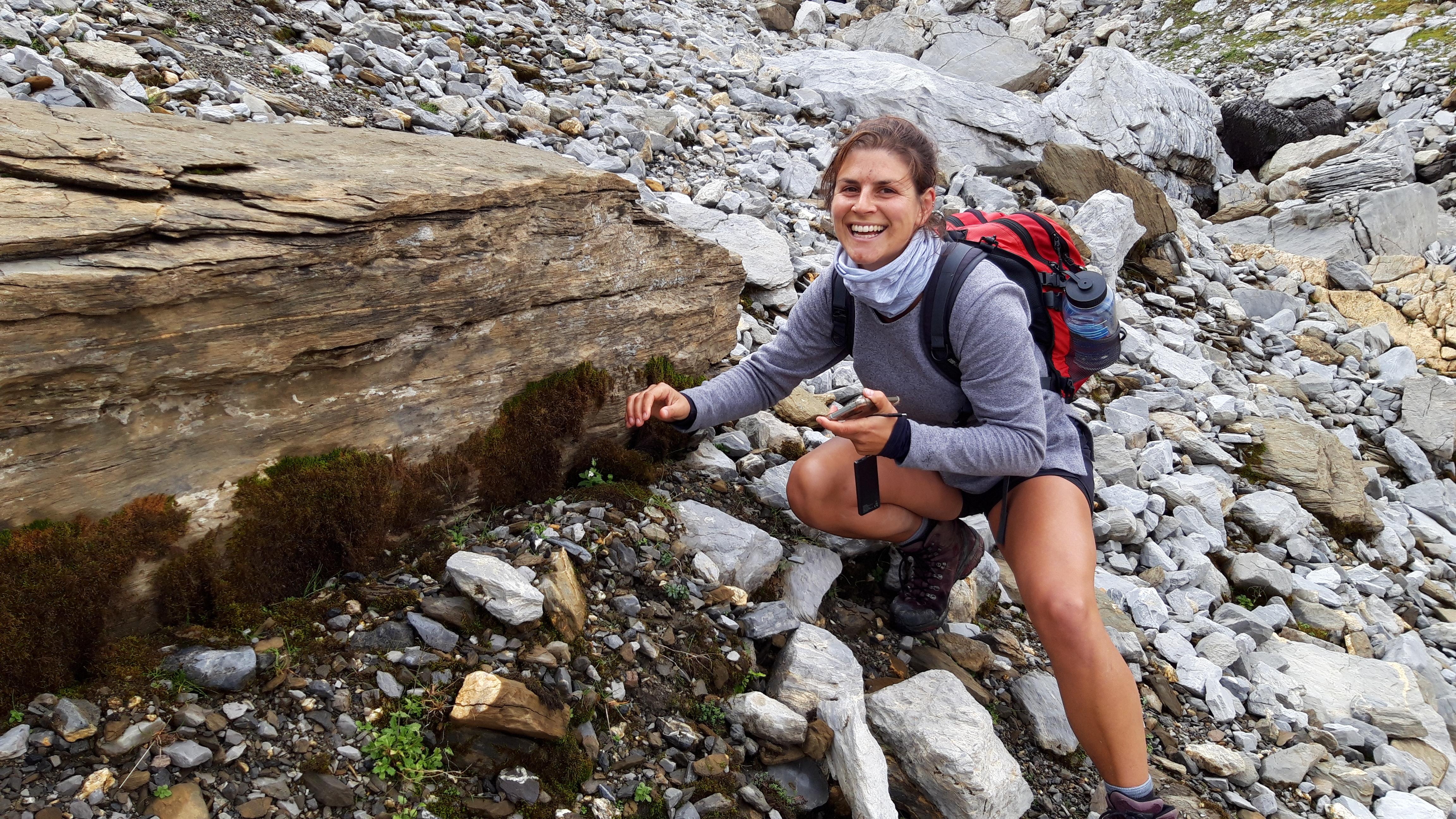
The alpine rock-cress produces white flowers and grows in rocky, sandy mountain soil as well as in cracks in mountain rocks © GEOME / 2024 EPFL CC-BY-SA 4.0
A team of scientists from EPFL and other research institutes have identified just how an Alpine flower is surviving by adapting its genes to local habitats. This discovery has important implications for the protection of ecosystems under threat.
In the Alps, adventurous hikers aren't the only ones to regularly climb to new heights. Several plant species are doing the same in response to climate change, as warmer temperatures threaten their survival. Today, scientists are working with environmental conservation organizations to better understand the strategies used by these species and predict their migration, in order to help protect Switzerland's biodiversity.
A research team that includes EPFL scientists began studying this process in 2013, combining geographic information systems with molecular ecology (landscape genomics). Their findings - published in the July issue of Evolutionary Applications - can help answer a question that has puzzled biologists until now: at what scale does natural selection operate? The study clearly indicates that natural selection works on a very localized level and can vary significantly, even within the same plant species. That means a multiscale framework is essential for making effective observations about how the natural selection process works.
Mapping and genomics
In the study, researchers used drones and a light-detection and ranging (LiDAR) system installed on a helicopter to produce topographic models of four valleys in the Vaud Alps at an unprecedented spatial resolution of 6 cm to 32 m. At the same time, the researchers collected samples of a plant representative of the local ecosystem - the Alpine rock-cress (Arabis alpina) - at the four sites. This plant produces white flowers and grows in rocky, sandy mountain soil as well as in cracks in mountain rocks. The researchers extracted the whole genome of plants from each of the four sites in order to identify genotype variations. When they combined the results with the geographic data, they discovered that the species' genome varied significantly between valleys based on the specific environmental conditions in each one (sunlight, humidity, air temperature, surface slope and orientation, etc.). In other words, they saw just how the plant fights for survival in response to its local habitat.
Now, for the first time, we're able to detect natural selection signatures at the right scale
A multiscale approach
Stéphane Joost, the corresponding author and a senior scientist in the Geospatial Molecular Epidemiology Group (GEOME) at EPFL's Laboratory for Biological Geochemistry (LGB), explains: "For a long time, these kinds of studies used topographical models with a spatial resolution of just 25-50 m and that were supplied mainly by the Swiss Federal Office of Topography. Now, for the first time, we're able to detect natural selection signatures at the right scale."
So what new information does this reveal? Joost gives the example of a defense mechanism that the Alpine rock-cress uses to ward off plant-eating insects. These insects are often found under the large mountain rocks where Alpine rock-cress grows. To protect its leaves, the plant produces a sugary sap that repels the insects. "We found a significant association between a gene involved in this defense mechanism and a variable that measures surface roughness - but only when the variable is calculated at a spatial resolution of 2 m," says Joost. "The association can't be detected or doesn't exist at other resolutions." He believes the study shows how important it is to carry out multiscale analyses in order to identify the full range of local adaptation strategies that are crucial to the survival of a given species.
The study also highlights another important point: even though the Alpine rock-cress samples collected at each of the four sites share the same genetic heritage, owing to the plant's recent evolutionary history, they developed survival strategies specific to their local habitats - even when the habitats are fairly close together.
Protecting with predictive models
The kind of computer models developed by the research team can be a valuable ally in the response to global warming. They can generate maps of how a region is expected to change over time, showing, for example, which areas will have the most favorable climate for Alpine rock-cress in 50 years. The maps can also help scientists understand the "genetic offset" of a species, or the extent to which it will need to adapt if it doesn't migrate either naturally or artificially.
The article appearing in Evolutionary Applications presents the findings of a long-term study funded by the Swiss National Science Foundation (SNSF) and carried out by EPFL in association with the Swiss Federal Research Institute for Forest, Snow and Landscape Research (WSL), the University of Neuchatel, the University of Fribourg, and the HEIG-VD School of Engineering and Management. The article also draws on the PhD research conducted by Annie Guillaume, the lead author, while a student at GEOME.

The type of computer modeling done in this study is a valuable tool in conservation genetics research and helps scientists identify the most effective measures for protecting a region's biodiversity. To support efforts in this area, three local conservation organizations - Naturéum Lausanne, the Geneva Natural History Museum, and the Geneva Conservatory and Botanical Garden - along with the Universities of Lausanne and Geneva will be hosting this year's European Conservation Genetics Meeting. The event will take place in Lausanne on 28-30 August 2024.






